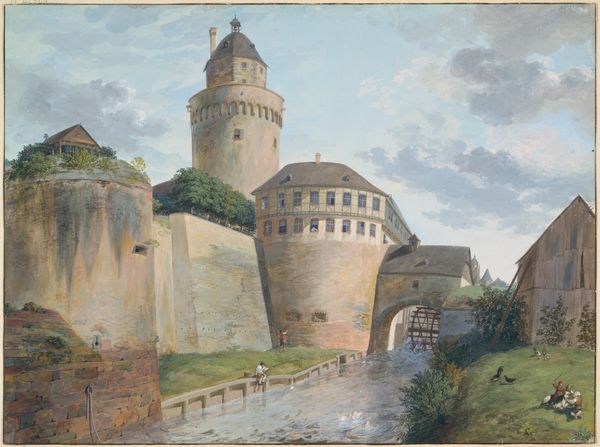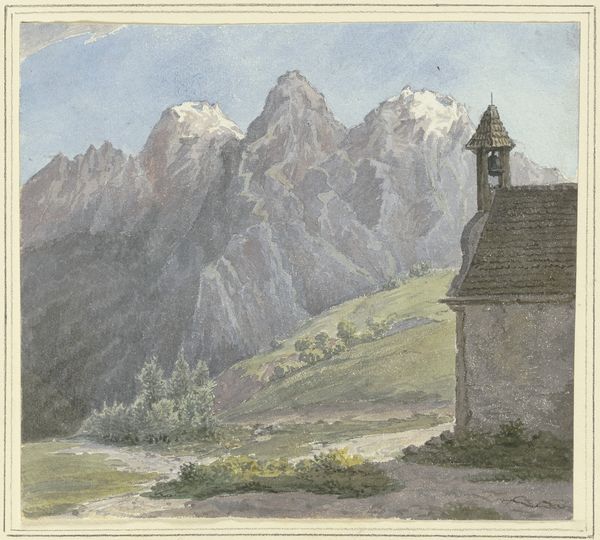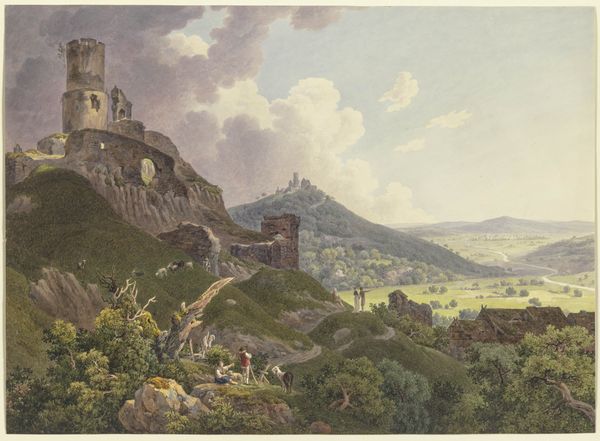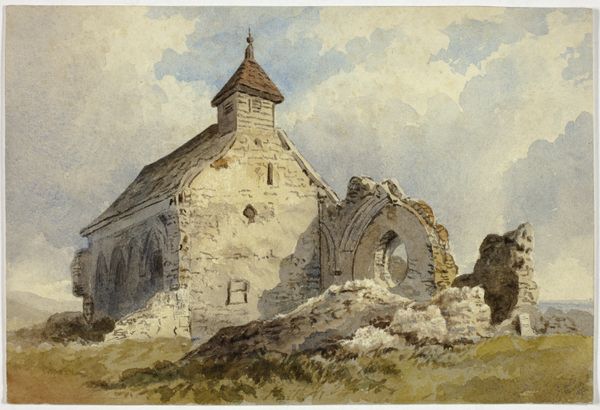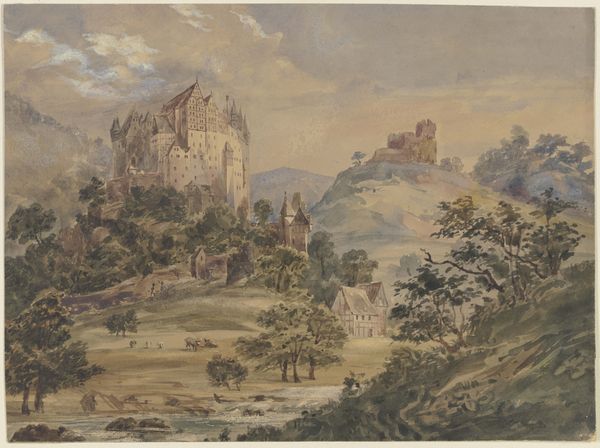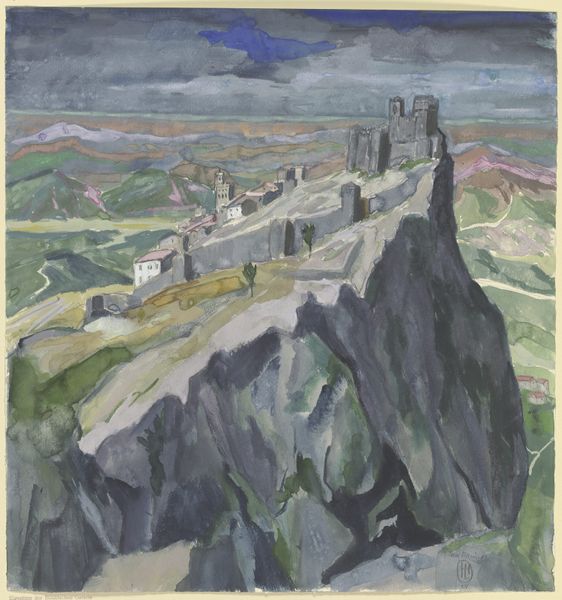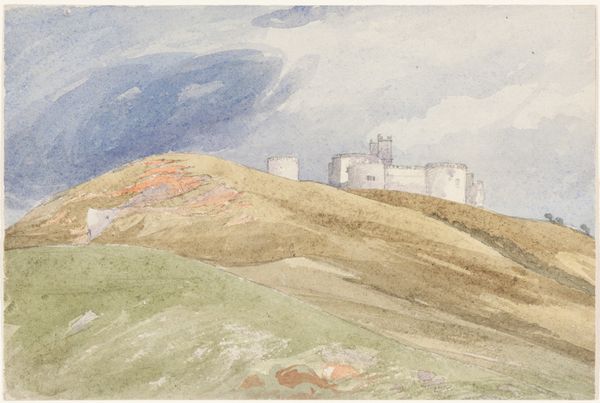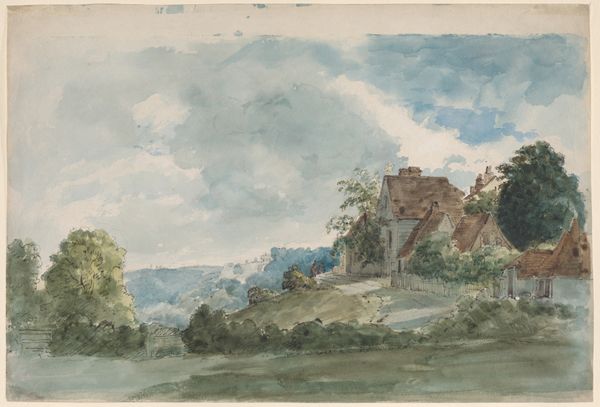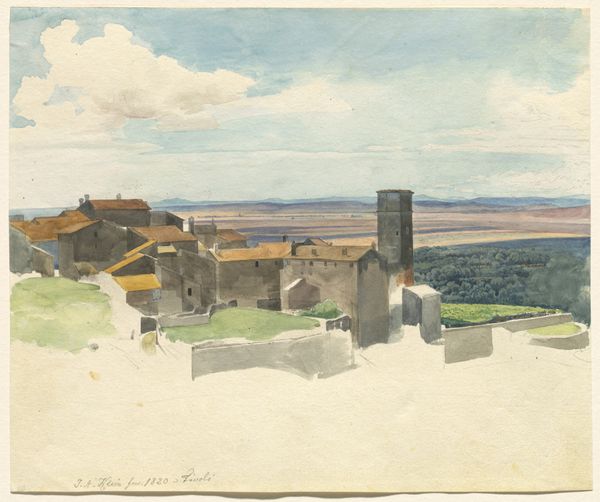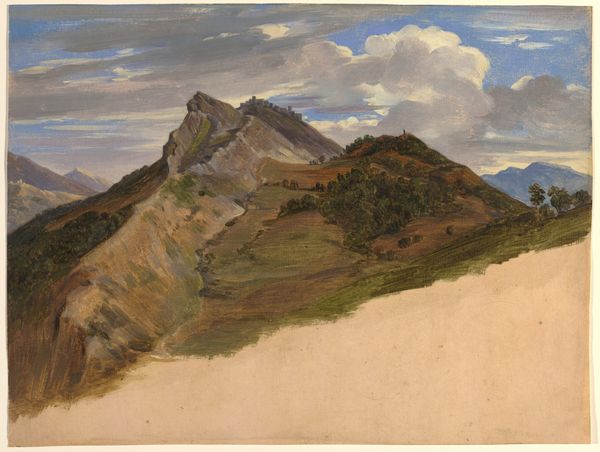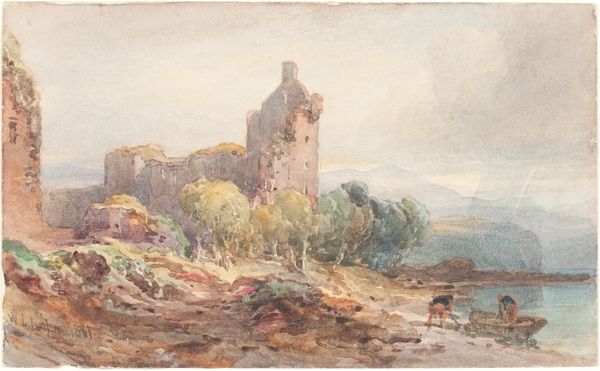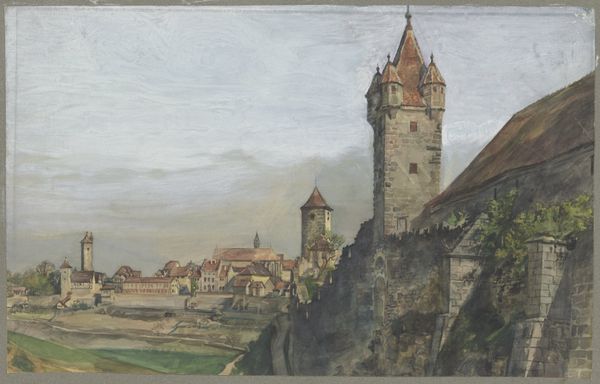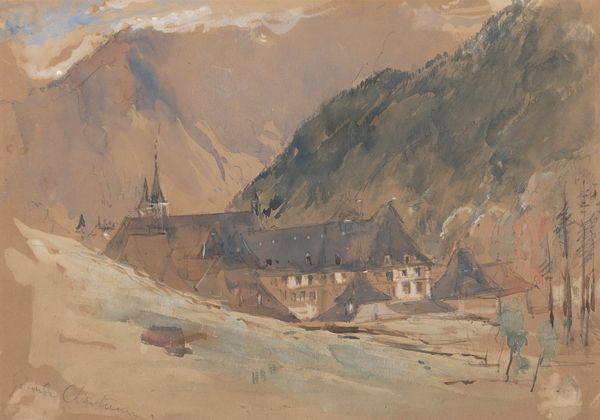
Ruin of Burg Schachenstein at Thörl in Styria 1820 - 1875
0:00
0:00
drawing, watercolor
#
drawing
#
sky
#
landscape
#
watercolor
#
romanticism
#
watercolour illustration
#
watercolor
Dimensions: sheet: 12 1/4 x 18 11/16 in. (31.1 x 47.5 cm)
Copyright: Public Domain
Curator: This watercolor drawing, dating from between 1820 and 1875, is entitled "Ruin of Burg Schachenstein at Thörl in Styria" by Thomas Ender. It resides here at the Metropolitan Museum of Art. Editor: Immediately, I'm struck by the interplay of decay and resilience, a hallmark of Romanticism. The ruined castle against the dynamic sky feels… foreboding. Curator: Absolutely. Romanticism consistently engages with these themes of loss and longing. Think of the post-Napoleonic era. The Congress of Vienna sought to reinstate monarchies, clashing with burgeoning democratic ideals. We see the crumbling castle representing a dying feudal order viewed with melancholic nostalgia even while the clouds could symbolize revolutionary turmoil brewing beneath the surface. Editor: I’m drawn to the strategic positioning of the castle; it perches almost precariously atop the landscape. Its verticality juts defiantly, against the sky while the clouds overhead convey some turmoil or sublime uncertainty about fate. Curator: Note how ruins signify more than literal architectural breakdown. In 19th-century consciousness, they symbolize the frailty of human ambitions against immutable natural forces. Gender plays a part in that the natural would at that time be seen as feminine, with uncontrollable power. Editor: Visually, there’s such weight to the cloud formations—heavy, symbolic, nearly eclipsing the pale sky—that dominates. It mirrors the solid, seemingly timeless construction below. The ruins take on an emotional resonance given these features of light and setting. I even observe travellers on horses. It really adds another aspect to the scene; are these visitors paying respects or opportunistic pillagers of this memory of feudal society? Curator: Thomas Ender uses this scene to weave threads of political discourse of his day; the picture plays a delicate dance of destruction and transformation of the political, social, and class structures through the symbols. It could serve to prompt a critical inquiry into whose history are the cultural elite actually commemorating in visual and literary work? Editor: It is quite interesting, thinking about this ruined building now. I like thinking more about what’s beneath what can be seen literally in art!
Comments
No comments
Be the first to comment and join the conversation on the ultimate creative platform.
